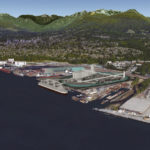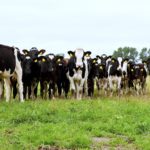
Tag Archives Business/Finance

As the year closes, some troubling numbers
Wall Street, the 'Trump bump' and the near future for commodity markets
Don’t derail trade deals

Drozd: Oat futures rally to a one-year high
Market Outlook: The increase might seem sudden but charts predicted upward movement

North asks AMM to support Port of Churchill
Resolution asks AMM to lobby to ensure port stays open for 2017 shipping season
Preparing for Trump’s food world
Many Trump policies could have wide-ranging impact on food and agriculture around the globe

A look at G3’s proposed new Vancouver grain terminal
A spiral track would allow trains to arrive on site, ease congestion elsewhere, and unload intact before returning to the Prairies

Western Canada’s publicly owned grain cars need replacing
Who will own the new ones and who will pay for them?

Prairie farm leaders meet CN Rail in Vancouver
It was an attempt to build bridges and ultimately improve grain shipping, but farmers remain unclear about the impact the MRE is having on car replacements

Dairy sector gets $350 million from feds
The investment is intended to offset losses expected in the sector when CETA is implemented

MRE counterpoint claims system hurts everyone
VIDEO: Barry Prentice says the MRE is bad for western grain farmers and the railways


